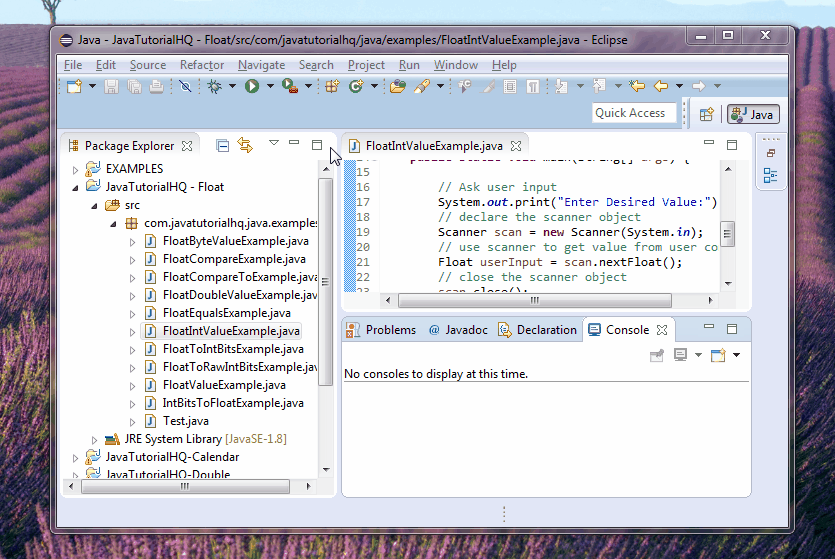java.lang.Float intValue()
Description
Float value = new Float(5147483647.4847f);. Certainly the value 5147483647.4847f is still within range of Float but what will happen if we will convert it to int using intValue() method? I will be discussing this thoroughly later on this document.Method Syntax
public int intValue()
Method Returns
The intValue() method of Float class returns the float value represented by this object converted to type int.
Compatibility
Java 1.0
Discussion
Float value = new Float(15.12f);. What will gonna happen is that, the decimal digit will get truncated if we use the intValue method. What we mean we say the decimal digit will get truncated such that the value returned will be be 15.
Java Float intValue() Example
Below is a simple java example on the usage of intValue() method of Float class.
package com.javatutorialhq.java.examples;
import java.util.Scanner;
import static java.lang.System.*;
/*
* This example source code demonstrates the use of
* intValue() method of Float class.
*/
public class FloatIntValueExample {
public static void main(String[] args) {
// Ask user input
System.out.print("Enter Desired Value:");
// declare the scanner object
Scanner scan = new Scanner(System.in);
// use scanner to get value from user console
Float userInput = scan.nextFloat();
// close the scanner object
scan.close();
// convert the Float input to int
int value = userInput.intValue();
out.println("Value in int is " + value);
}
}
Basically on the above example, we just ask for user input on the console and then we use the scanner object to get the float input. After that we assign the value to an Float wrapper class and we then get the value in primitive data type int using the intValue() method of Float class.

